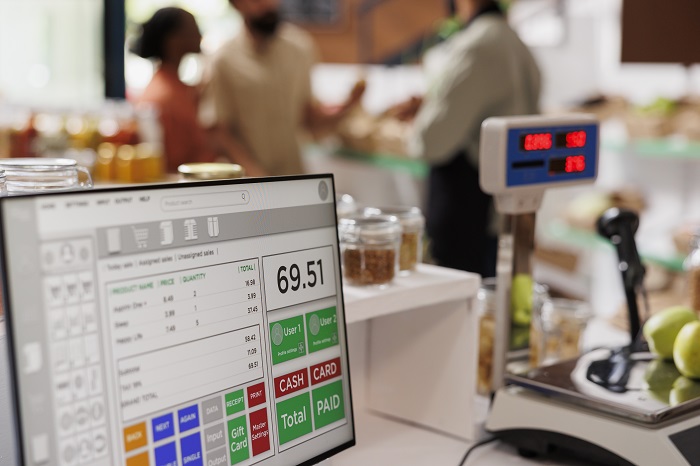The retail landscape is undergoing a major transformation driven by technological disruptions that are reshaping consumer behaviors and expectations. At the epicenter of this revolution is EPOS (Electronic Point of Sale) software – an innovation that is taking the shopping experience into the digital age. This article explores how EPOS systems are poised to redefine retail operations and deliver next-generation customer experiences.
Evolution of Retail Technology
To understand the transformative impact of EPOS technology, it is important to trace the evolution of retail tech. The first cash registers, introduced in the late 19th century, helped shop owners systematically record sales data. The next major leap came in the 1970s-80s with the emergence of barcode scanners and inventory management systems tied to POS terminals. While these tools automated checkout and stock-taking, they still only offered product-level data.
Modern EPOS platforms take tech integration to new heights. Linking everything from inventory sensors to customer relationship management (CRM) databases, they provide end-to-end visibility of transactions and shopper behavior. Tablet and cloud-based POS options make features accessible across store locations and eCommerce channels. With their holistic view of operations and analytics power, EPOS solutions mark the next retail milestone.
Unlocking Operational Efficiency
Legacy point of sale systems focused heavily on payment processing and keeping checkout lines moving. EPOS software builds on these transactional foundations but goes much further to optimize overall efficiency.
For inventory and stock management, EPOS ordering system allows accurate demand forecasting, real-time visibility of stock levels across the retail chain to minimize overstocking/understocking risks. Automated reordering and integration with supplier ERP systems enables just-in-time replenishments.
By eliminating inventory inefficiencies, retailers can achieve 2-4% savings as a share of sales.
EPOS analytics also provide insights to optimize workforce scheduling, especially helpful in times of labor shortage. Data-driven staff planning reduces overstaffing in slow periods while ensuring adequate coverage during peak trading hours. Estimates indicate 10-15% potential savings from scientific scheduling approaches.
Elevating the Customer Experience
An EPOS system serves as the nucleus of the modern retail operation, supporting functions that collectively heighten shopper satisfaction. For example, tablet POS solutions allow associates to scan items and finalize orders on the retail floor itself. This results in faster checkout, reducing queue wait times during peak shopping seasons.
Meanwhile, back-end analytics on consumer behavior and purchasing patterns help retailers offer personalized promotions and product recommendations. Based on purchase history, customers can receive customized discount offers and recommendations matching their preferences. This level of personalization breeds loyalty – 86% of buyers are willing to pay more for a personalized experience.
EPOS platforms also allow integration with innovative technologies like IoT (Internet of Things) enabled smart fitting rooms, digital signages, and mobile payment infrastructure. These next-gen retail elements converge to provide tailored, omnichannel shopping journeys – online or offline.
The Growth Trajectory
Retail EPOS spending worldwide stood at about $3.5 billion in 2022. But with retailers prioritizing technology investments, this figure is projected to grow at 11% CAGR and exceed $7 billion by 2030.
Much of this growth will be spearheaded by cloud EPOS systems, which enable centralized management while allowing rapid scaling across store locations and geographies. According to Global Market Insights, over 60% of EPOS solutions will be cloud-native by 2028, signaling the future.
Asia-Pacific countries offer strong expansion prospects, with India forecast to grow retail tech spend at 17% CAGR until 2027. North America and Europe are relatively mature EPOS markets but will see continued adoption. As solutions get more advanced and affordable, smaller independents and specialty stores now stand to benefit after larger chains reaped early rewards.
The Road Ahead
As EPOS platforms continue advancing, retailers now have an invaluable technology ally helping them keep pace with ever-changing consumer dynamics without losing focus on profitability, sustainability and compliance aspects.
The next frontier will see EPOS leveraging technologies like AI, AR/VR and blockchain even more deeply to transform retail. As 5G connectivity scales up, IoT integration will tear down brick-and-mortar limitations and augment physical store experiences digitally. EPOS systems sit at the core of this innovation cycle, continuously elevating commerce.
For retailers wondering how to stay resilient amid industry turbulence, evolving an EPOS strategy is indispensable. Because beyond buzzwords, this technology marks the future of retail.
Image by DC Studio on Freepik




